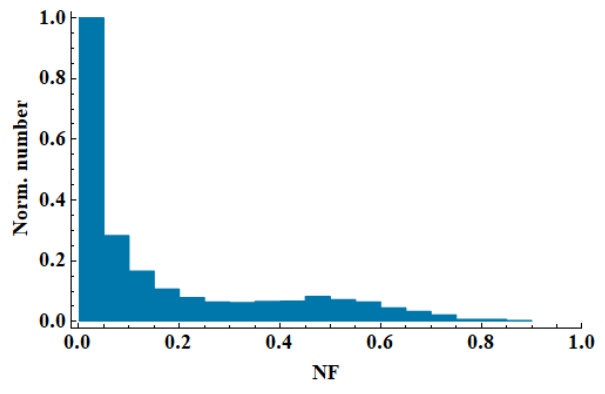
A recent study published in Astronomy & Astrophysics by a researcher from the Xinjiang Astronomical Observatory (XAO) of the Chinese Academy of Sciences has provided new insights into the phenomenon of "pulse nulling"—a sudden cessation of the entire radio pulsed emission observed in over 200 pulsars manifests. This event, which can last from a few rotations to several minutes, is suggested to be random, but its statistical distribution may hint at deeper patterns in pulsar emission behavior.
Pulse nulling is quantified by the nulling fraction (NF), defined as the proportion of pulses during which no detectable emission occurs. While NF varies from one pulsar to another, recent studies demonstrate a decreasing number of pulsars with increasing NF, suggesting certain underlying patterns for nulling.
Despite these patterns, the relationship between the apparent randomness of nulling and the distribution of nulling fractions has remained unclear. To address this, the researcher at XAO employed a magnetospheric model featuring multiple emission states, each characterized by a particular plasma charge density.
Assumptions are also made so that (i) pulse nulling is a manifestation of emission cessation across the whole profile; (ii) the cessation is due to switching in the plasma density to zero under favorable condition; and (iii) the emission region is divided into emission segments with the occurrence of point (ii) being separated in each segment.
To test the model, a large-scale simulation was conducted involving 5,000 synthetic pulsars, each observed over 1,000 rotational periods. The resulting normalized distribution is positively skewed towards higher NFs, consistent with that obtained from observations. The findings support the notion that nulling is a low-probability event that emerges from stochastic processes within the pulsar's magnetosphere.
Interestingly, the study found no significant correlation between NF and the obliquity angle—the angle between a pulsar's magnetic and rotational axes. However, the number of nulling pulsars increases as the obliquity angle of a pulsar decreases, suggesting a potential geometric influence on the occurrence of nulling.

Histogram showing the best-fit normalized distribution of the nulling fractions based on simulation of 5000 sample pulsars. (Image by XAO)

86-10-68597521 (day)
86-10-68597289 (night)

52 Sanlihe Rd., Xicheng District,
Beijing, China (100864)

